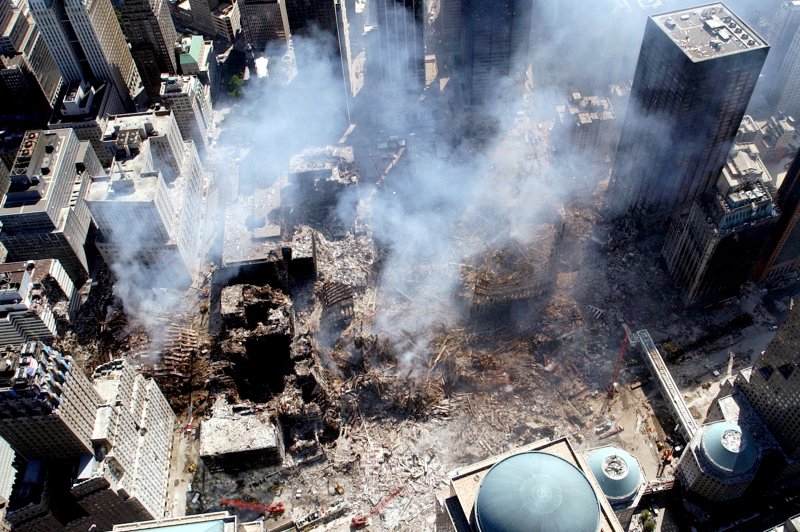A recent study has found that children exposed to chemicals when the World Trade Center collapsed on Sept. 11, 2001 are showing early signs of an increased risk of heart disease. File photo by Eric J. Tilford/UPI |
License Photo
Sept. 11 (UPI) -- Sixteen years after the World Trade Center collapsed on Sept. 11, 2001, a study finds children exposed to toxic chemicals released during the collapse are at early risk of heart disease.
The study, published Friday in Environmental International, was conducted by researchers at New York University Langone Health and NYU School of Medicine.
"Since 9/11, we have focused a lot of attention on the psychological and mental fallout from witnessing the tragedy, but only now are the potential physical consequences of being within the disaster zone itself becoming clear," Dr. Leonardo Trasande, an associate professor at NYU School of Medicine and health epidemiologist, said in a press release.
Certain perfluoroalkyl substances, or PFASs, were released into the air as electronics and furniture burned in the collapse of the World Trade Center. These chemicals are linked to negative health effects such as low birthweight and brain damage.
Perfluorooctanoic acid, or PFOA, was one of the PFASs widely used in manufacturing to make plastics more flexible. These negative health effects lead to U.S. manufacturers halting the use of PFOA in 2014.
Researchers conducted blood tests on 308 children, 123 who came in direct contact with dust on 9/11, and found that children with higher blood levels of the chemicals found in the dust from the World Trade Center collapse showed elevated levels of artery-hardening fats in their blood.
The study showed that every threefold increase in blood PFOA levels was tied to an average of 9 to 15 percent increase in blood fats including LDL cholesterol and triglycerides.
The study participants were enrollees in the World Trade Center Health Registry, or WTCHR, which tracks the physical and mental health of nearly 2,900 children who lived in or attended school in Lower Manhattan on 9/11.
A January 2017 analysis by the team found the same 123 children in the WTCHR showed significantly higher PFOA blood levels compared to 185 children who did not live or attend school in Lower Manhattan on 9/11.
"Our study emphasizes the importance of monitoring the health consequences from 9/11 in children exposed to the dust, and offers hope that early intervention can alleviate some of the dangers to health posed by the disaster," Trasande said.















